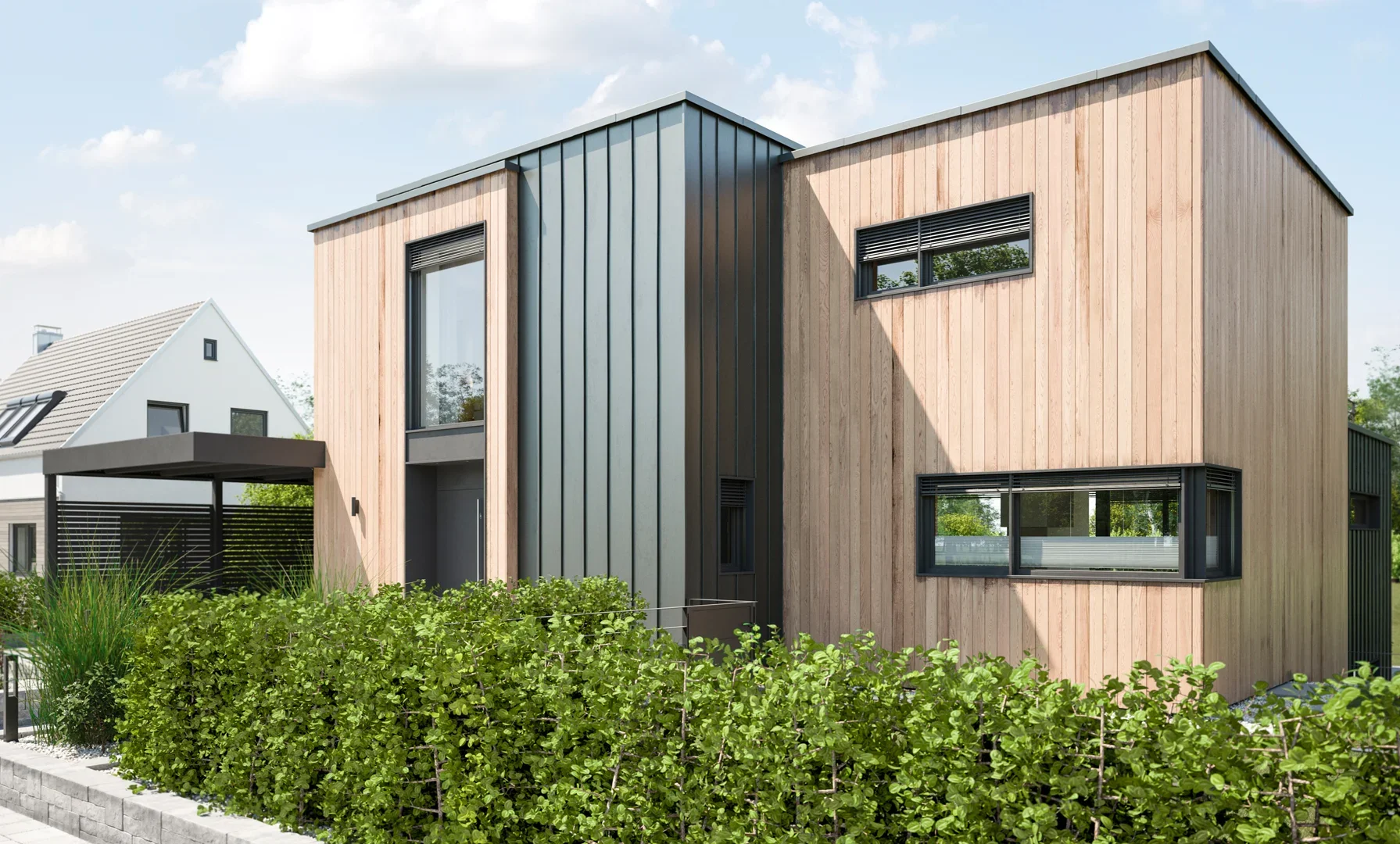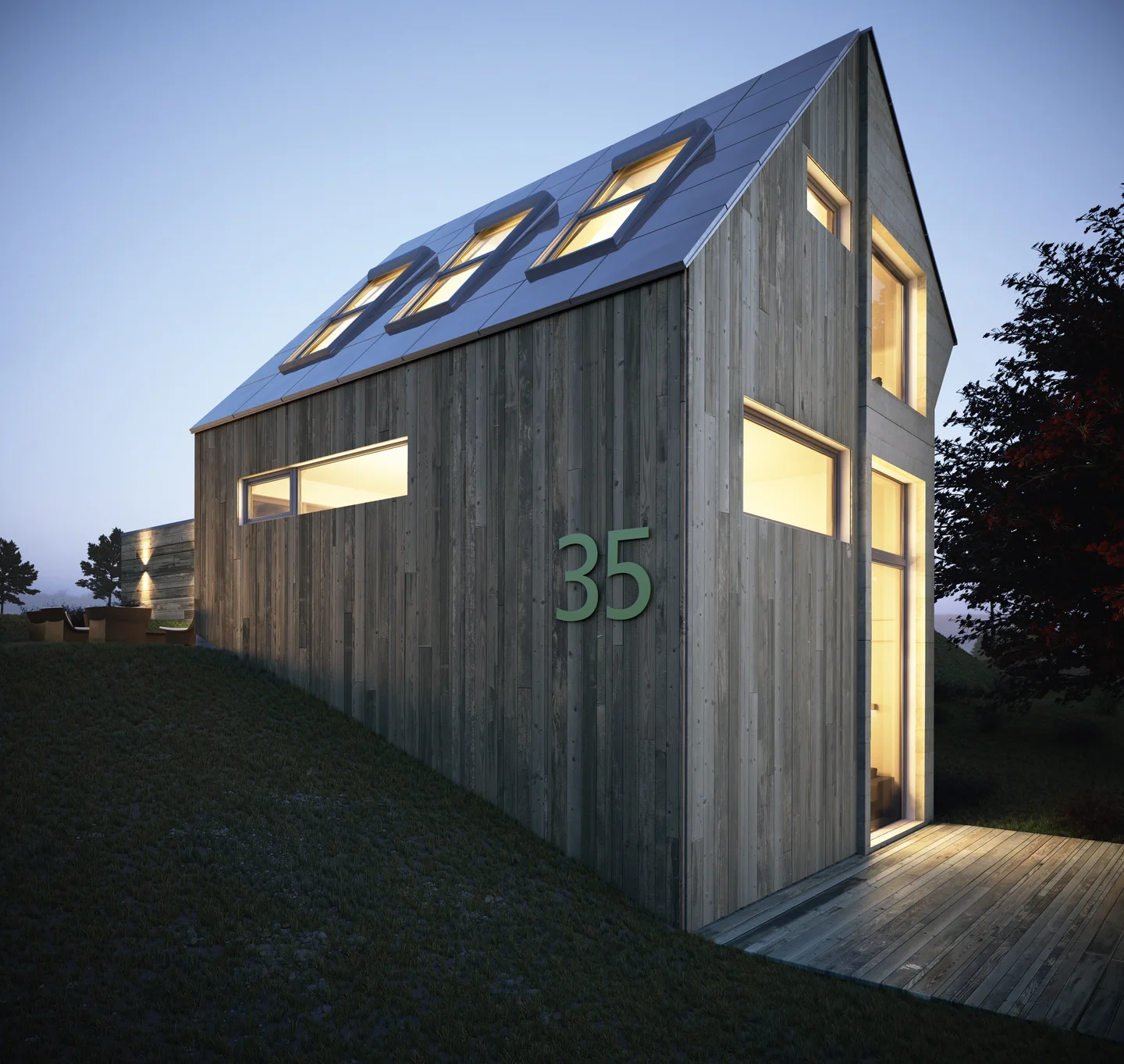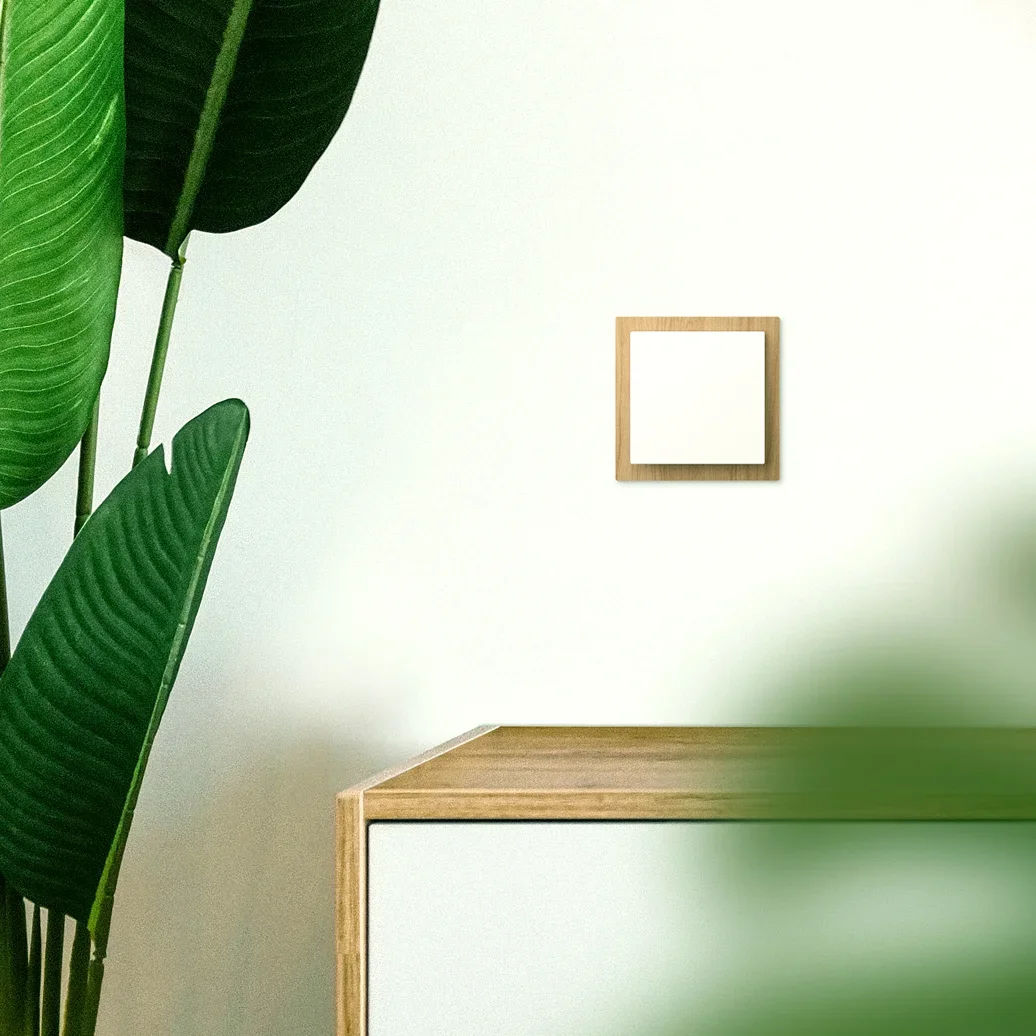The order could not be shipped.
The order was successfully shipped.

Building with wood -
still justifiable or even necessary?
"Wood is hopelessly outdated as a building material. And in these times characterised by climate change, we should conserve forests as much as possible anyway". Are any of these statements actually true? Even one syllable of this statement? Let's keep it short: No! We will be happy to explain why this is the case.
Building with wood is active climate protection


Did you know that almost a third of the land surface is covered with forests?
They were created in evolution through photosynthesis and can be seen as materialised solar energy. If you now use wood for houses in towns and villages, it is as if you are planting a second forest, "which would contribute significantly to carbon dioxide sequestration and climate improvement".1
Wood grows back. This is the compelling argument in favour of sustainable architecture. It's not about exporting exotic teak from the rainforest, but about native trees from managed cultivated forests, such as spruce, pine, beech and oak. This conscious and responsible forest management fulfils high standards, including water retention capacity, erosion protection and safeguarding biodiversity.
1 Kaufmann, Herrmann and Winfried Nerdinger: Building with wood, Prestel, 2016, p. 5
- The "production" of the building material is very climate-friendly: as a tree grows, CO₂ from the atmosphere is bound and stored in the wood in the form of carbon.
- Additional CO₂ emissions are saved simply by avoiding the production of energy-intensive building materials such as steel, concrete and stone.
- As a building material, wood is also recyclable (perhaps needless to say): It can be reused as a new building material or utilised for energy.

But you don't build a house out of wood just to do society and nature a good turn. There are also numerous other advantages. Research and further development, specialised production techniques and digital planning and manufacturing methods have been driven forward for a long time, particularly in German-speaking countries. With incredible success.
Today, wood can replace all other building materials in all areas: Residential construction in all sizes, industrial sites, commercial buildings, public buildings. In terms of statics, fire protection, sound insulation and thermal insulation, wood fulfils every requirement today. This makes the use of this sustainable building material almost unlimited.
Very special performance: Extensions, especially additions, are becoming increasingly important because building space in cities is becoming ever scarcer. Wood is already the favoured building material here. Not only because of its comparatively low weight, but also for reasons of aesthetics and healthy living. With this last keyword, we have only hinted at a particularly important aspect: indoor climate is playing an increasingly important role in architecture. Perhaps we will address this topic in a future article in the inspiration section.
Perfect partner: Smarter Home
Natural construction and state-of-the-art building technology are a perfect match. If you think that it is better to install two smart smoke detectors per room in a wooden house, according to the motto "better safe than sorry", then you are wrong. Fire safety regulations in Germany are extremely strict and affect almost every single component. And wooden buildings fulfil them all. In fact, timber houses have similarly high fire resistance classes as solid houses. So: one smart smoke detector per room is enough.
And otherwise, of course, every other smart function in a timber construction is just as useful and good as in other construction methods. A complete system such as Busch-free@home® is best planned and installed from the outset. But this also applies regardless of the choice of building material.
You can find more information on the topic of smart homes and our Busch-free@home® system here.
Tip: Building with wood is subsidised by the state. It is worth obtaining further information here.
Wood is versatile


Wood is much more than just a building material for houses. It has been used to make furniture and everyday objects for many hundreds of years. We also utilise this versatile material in our switch designs - such as Busch-art linear.
